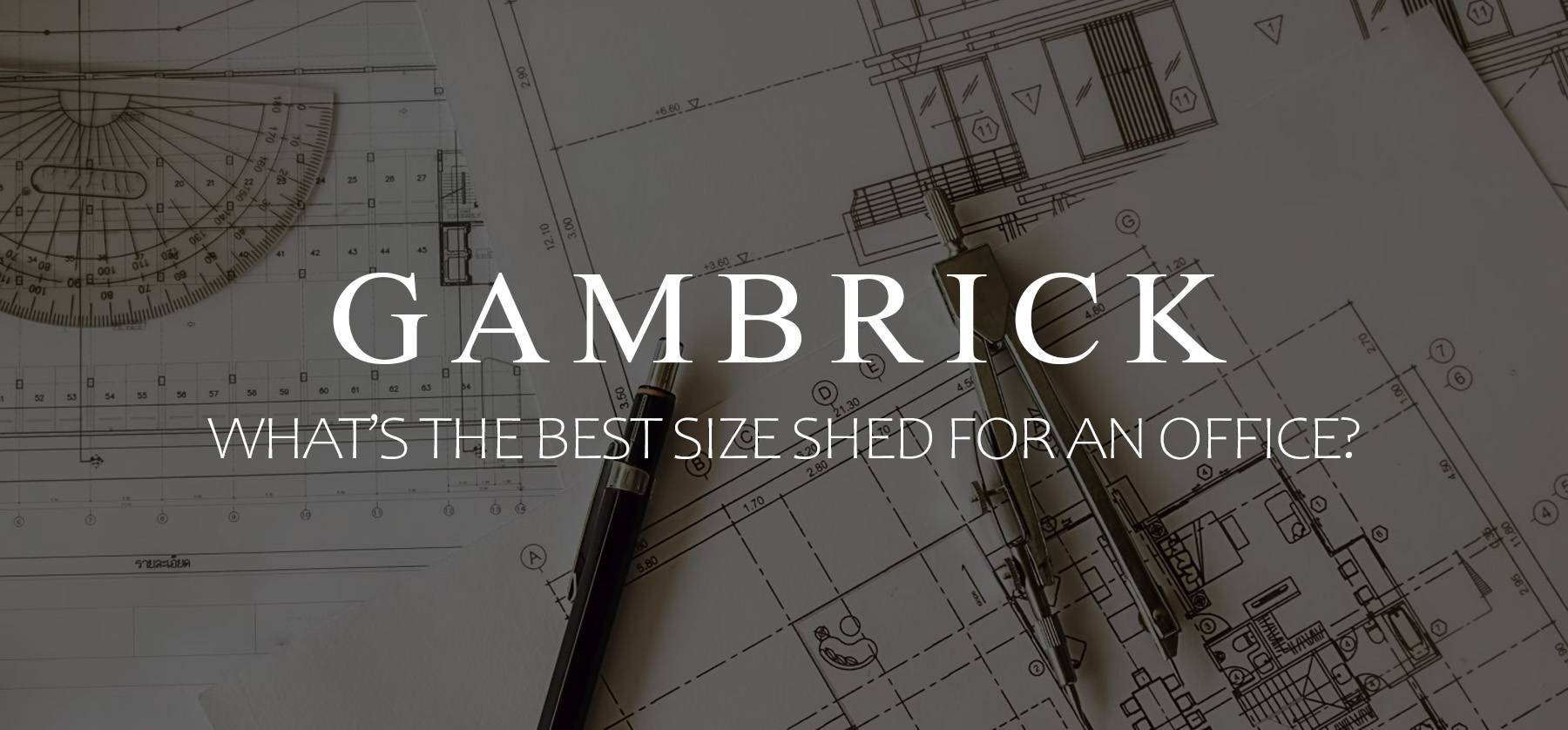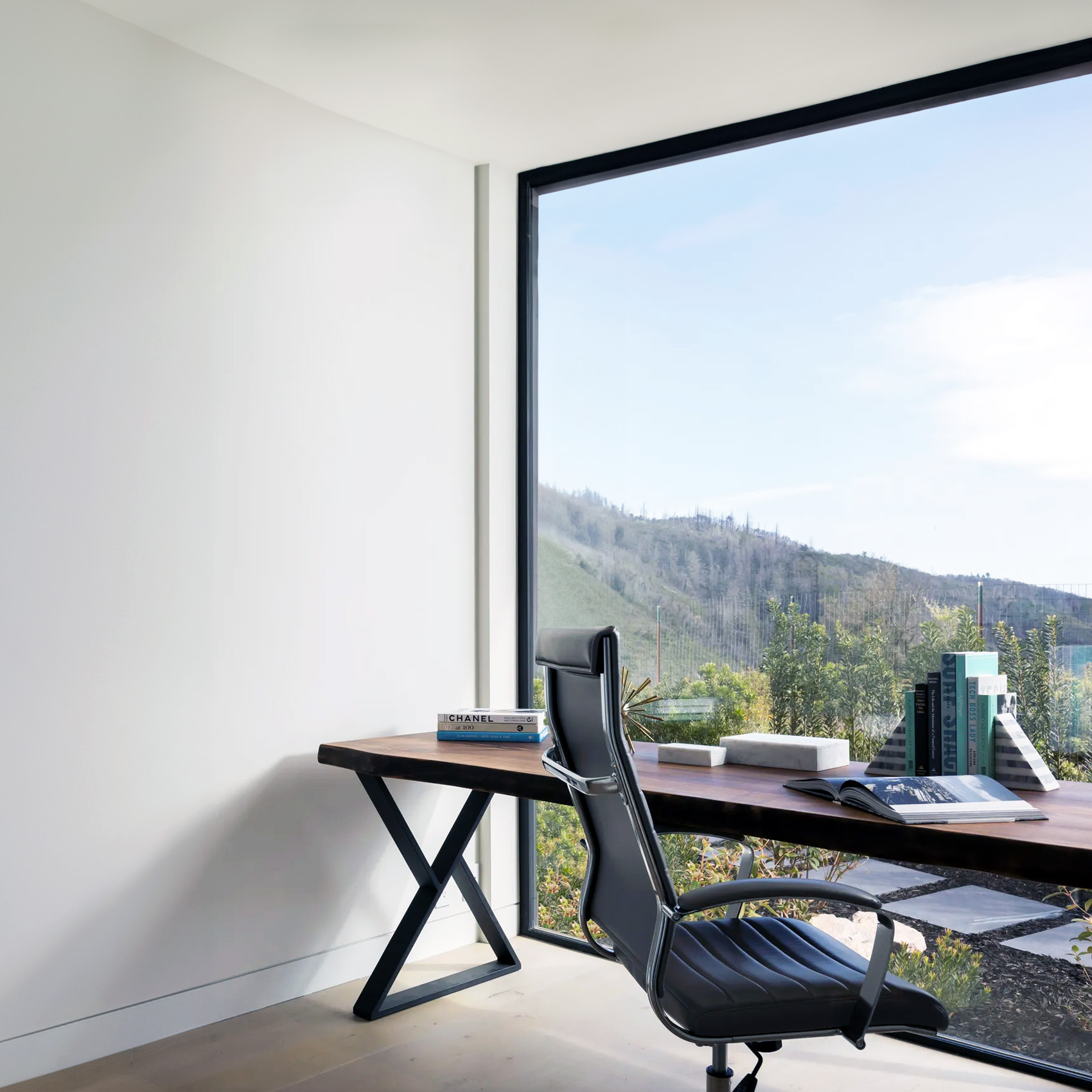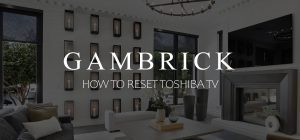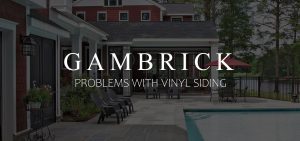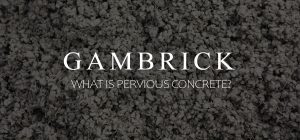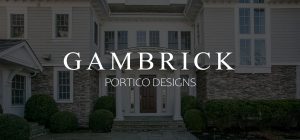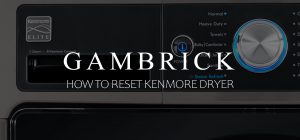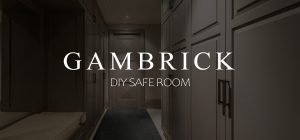What’s The Best Size Shed For An Office?
The best size shed for an office is between 8’x10′ and 8’x24′. Anything wider than 8.5′ is considered an oversize load and too big to deliver on a standard-size trailer. Larger structures are considered an ADU (Accessory Dwelling Unit), which are great for a home office, but they’re not a shed. When you buy a standard 8′ wide shed, it can be built prefab and delivered to your home completely assembled and ready for use. Ultimately, the best size shed to buy for your home office depends on what you want to use it for.
- A small 8’x10′ – 8’x12′ (80 – 96 sq. ft.) shed will accommodate a small desk, office chair, filing cabinet, bookcase, mini-fridge, and a storage cabinet with enough space on top for a coffee maker. It’s a great office for one person.
- A medium 8’x14 – 8’x16′ (112 – 128 sq. ft.) shed is best for two people or one person that wants more space. It’ll fit a larger desk, mini-fridge, storage, bookshelf, and additional seating.
- A large 8’x18′ – 8’x24 (144 – 192 sq. ft.) shed is big enough for 2-4 people but still small enough to deliver on a trailer. It’ll accommodate a large desk for two, office chairs, filing cabinets, bookcases, a larger fridge, additional seating, and storage cabinets. You can even squeeze in a small 15 sq. ft. bathroom with a toilet and sink or a 30 sq. ft. bathroom with a small shower.
As remote work becomes more popular, many professionals seek ways to create an office workspace at home without being inside the house. One trend meeting this need is the backyard office shed, which offers privacy, functionality, and a touch of charm. But choosing the right size shed for your office is crucial to meet all your work requirements.
What Is An Office Shed?
An office shed is a dedicated workspace within a shed-like structure located on your property. It’s a way to create a home office that’s physically separate from the main living space, offering a dedicated, quiet environment that’s perfect for focusing on work. Office sheds come in all shapes and sizes, and they can be custom-built or purchased as pre-fabricated units.
The standard size for a shed is 8 feet wide x up to 16 feet long. Anything larger than this would be more difficult to deliver as a prefab unit and could be considered an ADU (Accessory Dwelling Unit). The benefit of using a shed as a home office vs an ADU is that sheds do not require a full foundation and usually don’t require as many permits.
In most cases, a prefab home office shed can be used the day it’s delivered.
The benefits of having an office shed are numerous:
- They provide a physical separation between work and personal life, helping to maintain a healthy work-life balance.
- A shed office offers a quiet and focused environment away from household distractions, which can increase productivity and job satisfaction.
- It can be designed and personalized according to your work needs and aesthetic preferences, creating a truly personal and inspiring workspace.
While many people use their office sheds as a typical office setup for desk-based jobs, the flexible nature of these structures means they can be adapted to serve as a variety of other professional spaces as well. This includes creative studios for artists or photographers, workshops for crafters or DIY enthusiasts, and even consultation spaces for therapists or tutors.
The functionality of an office shed is largely dictated by its size and layout, hence the importance of selecting the right size for your needs.
Why Size Matters For An Office Shed
The size of your office shed will influence your work, productivity, and comfort. A shed that’s too small can feel cramped and may not have enough space for all your work stuff and furniture. But a shed that’s too large will increase heating and cooling expenses and will cost a lot more money. The best size shed should be sized to the work you do and the furniture you’ll need inside the room.
As a general rule, I always recommend going a size or two bigger than you think you’ll need just in case. Finding the right balance between size and cost is the key to creating an optimal workspace.
Beyond comfort and productivity, the size of your office shed can also have implications for planning and zoning regulations in your area.
- Certain municipalities have strict rules regarding the construction of additional structures on residential properties.
- It’s crucial to research and comply with these regulations before choosing the shed size.
- In most areas, there are restrictions governing what’s considered a shed and what’s an ADU.
Size plays a significant role in determining the cost of your office shed. A larger shed usually requires more materials and labor to build, leading to higher construction costs. They’re also more expensive to transport to your home if you buy a prefab unit.
Larger sheds usually mean higher costs for interior furnishings and ongoing utilities. Therefore, your ideal office shed size should be in alignment with the size you need and your budget.
Factors To Consider When Determining An Office Shed Size
There are several factors to consider when choosing a size for your home office shed. The first and possibly most important is the type of work you do. If your work primarily involves a computer and a desk, a smaller shed may be good enough. However, if you need space for additional equipment, such as printers, scanners, or crafting tools, you’ll probably need a larger shed.
Here are some additional factors to consider:
- Number of People Using the Shed: If it’s only you using the office, a smaller shed might be enough. But if you anticipate sharing the space with a business partner, employees, or clients, you’ll need to factor in additional space and seating.
- Storage Needs: Consider what you need to store in your office. If you have a lot of paperwork, books, or office supplies, you’ll need enough space to house storage furniture.
- Room for Growth: Think about your future needs. If you expect your business to grow, or if you might hire an assistant, plan for this from the beginning. It’s easier and more cost-effective to build a bigger shed now than to extend it later.
- Legal Limitations: Check the local laws in your area. Some municipalities have restrictions on the size of outbuildings. Make sure the shed size you have in mind is compliant with these regulations.
- Other Uses: Consider what you’d like to do with the shed if you no longer need a home office.
- Budget: In general, a larger office shed costs more than a smaller one considering you choose the same style, windows, doors, amenities, and finishes.
Common Office Shed Sizes
The most common office shed size is between 8’x10′ and 8’x16′. Anything wider than 8.5′ is considered an oversize load and too big to deliver on a standard-size trailer. Larger structures are considered an ADU (Accessory Dwelling Unit), which are great for a home office but aren’t a shed.
When you buy a standard 8′ wide shed, it can be built prefab and ready for use the same day it’s delivered. Ultimately, the best size home office shed size depends on what you want to use it for, your budget, and how much space you have on your property.
Small Office Shed (8×10 & 8×12)
Small 8×10 & 8×12 sheds are compact, but when properly organized, can provide enough space for a functional office. Ideal for single users, such as freelance writers, graphic designers, or consultants, these sheds can comfortably house a desk, chair, and some storage units. Remember, the key to making a small space work is clever organization and storage solutions.
Small-sized sheds are compact but can be transformed into efficient office spaces with the right planning and organization.
- Ideal for individual users, these sheds can house essential office furnishings such as a desk, chair, bookcase, mini-fridge, and some storage units without feeling too cramped.
- Professions’ small sheds are best for freelance writers, graphic designers, consultants, and other remote workers who primarily need a computer and a quiet space to focus.
- A well-organized small-sized shed offers the advantage of cost-efficiency, while also promoting productivity by containing only the essentials, thus reducing distractions.
When yard space is limited, or when your work doesn’t require extensive equipment or space, a small shed can be the best choice.
Another significant advantage of small-sized sheds is their cost-effectiveness. They require fewer materials and less time to construct, translating to lower costs. They’re also more energy-efficient, requiring less power to heat or cool.
Medium-Sized Shed (8×14 to 8×16)
A medium-size 8x14shed is best for professionals needing a bit more space from their home office. Whether you’re a small business owner needing room for team meetings or a craftsman with larger equipment, medium-sized sheds provide more flexibility. This size can accommodate multiple workstations or areas for different activities, such as a desk area and a meeting or brainstorming area.
Striking a balance between spaciousness and affordability, medium-sized sheds have gained popularity among professionals who require more space than a small shed offers but don’t need a large workspace. With additional square footage, medium-sized sheds can comfortably accommodate more complex setups, including multiple workstations, larger equipment, or separate areas designated for different tasks.
- This size is perfect for small business owners who might need to host team meetings or brainstorming sessions within the office shed.
- Professionals like artists, craftspeople, or photographers who need space for both creative work and administrative tasks will find medium-sized sheds particularly suitable.
- Multifunctional furniture that provides storage while serving as a workspace can help prevent the area from feeling cluttered.
While they provide more room than small-sized sheds, medium-sized sheds still necessitate thoughtful planning and organization. Maximizing space efficiency is key, so layout and furniture selection becomes more critical.
Overall, medium-sized sheds offer more versatility without the high costs associated with a large office shed. They’re an excellent choice for professionals who need more than just a desk and chair to effectively perform their work.
Large-Sized Shed (8×18 to 8×24)
For those who need lots of space, a large 8×18 to 8×24 shed is the way to go. This size is suitable for larger teams, or businesses that require a meeting area or space for clients. Large sheds also allow for the inclusion of amenities like a small restroom or kitchenette, making them more self-contained and convenient for extended periods of work. But they’re more expensive to buy and transport with higher heating and cooling costs.
These sheds can serve as comprehensive business hubs, housing multiple employees and meeting a small conference area. They can fit a desk for two, bookshelves, storage units, a larger fridge, and seating for 4.
- Large office sheds are more expensive due to increased materials, labor, and furnishing costs.
- Maintenance and utility expenses are also typically higher due to the larger square footage.
- Large-sized sheds also present opportunities for creative and ergonomic interior design. With more space, there’s room to create distinct zones for different activities, choose larger or more specialized furniture, and even incorporate features like soundproofing for enhanced privacy.
On the exterior, large-sized sheds can make a strong visual impact, adding to the aesthetic appeal of your property. There’s also more wall space for windows and doors to let in lots of natural light.
Additional Considerations For Office Sheds
There are a lot of finishes to consider when designing an office shed vs a standard shed used to store tools. You’ll need things like electrical outlets, lighting, insulation, and finishes like wallboard, trim, and flooring.
Proper Insulation and Ventilation: An office shed should be well-insulated and ventilated. Proper insulation helps maintain a comfortable temperature throughout the year, reducing energy costs and increasing comfort. Ventilation is important not only for maintaining air quality but also for preventing issues such as condensation, which can lead to dampness and mold.
Technological Needs: Reliable access to technology is a must for most office environments. This means planning for WiFi connectivity, sufficient electrical outlets for your equipment, and possibly even a dedicated phone line.
Natural and Artificial Lighting: Good lighting is essential for any office space. Where possible, incorporate plenty of windows to allow for natural light, which can boost mood and productivity. For artificial lighting, consider energy-efficient LED lights. Also, remember to plan for task lighting, focused light for specific tasks like reading or drafting, in addition to ambient lighting.
Accessibility and Safety: Your office shed should be easy to access from your main house, ideally with a clear and well-lit path. It should also have safety features like secure locks on doors and windows and possibly even a security system if you plan on storing valuable equipment.
Aesthetics and Personal Comfort: Finally, remember that your office shed is a place where you’ll be spending significant time. Make it a space you enjoy being in. This could mean painting it in colors you find soothing, adding personal touches like art or plants, or investing in an ergonomic chair and desk. When you enjoy your workspace, you’re likely to be more productive and satisfied with your work.
How To Maximize Space In Your Office Shed
Sheds are generally 8 feet wide by varying lengths. Even large office sheds are still fairly small and narrow, so it’s extra important to maximize your available space. Here are some tips to help you do it:
- Strategic Layout Planning: Begin by thoughtfully planning the layout of your shed. Place larger pieces of furniture first, such as desks and storage units, and then arrange smaller items around them.
- Utilizing Vertical Space: Use the walls for storage to free up floor space. Install shelves, pegboards, or hanging organizers.
- Multipurpose Furniture: Invest in furniture that serves multiple purposes. A desk with built-in drawers or a storage ottoman that can also serve as seating are good examples.
- Keeping Things Organized: Keeping your shed tidy and organized can help it feel more spacious. Regularly declutter the space and make use of organizational tools like drawer dividers, baskets, and file organizers.
- Letting in Natural Light: Allow as much natural light into the space as possible. This not only helps the shed feel larger but can also boost your mood and productivity.
- Mirror Trick: Placing mirrors strategically can create the illusion of a larger space by reflecting light and view.
- Furniture Sizing: Buying smaller furniture sizes that’s minimalist in design can help save precious inches.
Each of these tips can be adapted to office sheds of any size, helping you make the most out of your workspace no matter its dimensions. But the smaller your shed, the more effective they’ll be because space is more limited.
Summary: What’s The Best Size Shed For An Office?
The best size shed for an office is between 8’x10′ and 8’x16′. Anything wider than 8.5′ is considered an oversize load and can’t be delivered assembled on a standard-size trailer. Larger structures are considered an ADU (Accessory Dwelling Unit), which are great for a home offices, but aren’t a shed. A standard 8′ wide shed can be built prefab and delivered to your home assembled and ready for use. Ultimately, the best size shed to buy for your home office depends on what you want to use it for.
- A small 8’x10′ – 8’x12′ (80 – 96 sq. ft.) shed will accommodate a small desk, office chair, filing cabinet, bookcase, mini-fridge, and a storage cabinet with enough space on top for a coffee maker. It’s a great office for one person.
- A medium 8’x14 – 8’x16′ (112 – 128 sq. ft.) shed is best for two people or one person that wants more space. It’ll fit a larger desk, mini-fridge, storage, bookshelf, and additional seating.
- A large 8’x18′ – 8’x24 (144 – 192 sq. ft.) shed is big enough for 2-4 people but still small enough to deliver on a trailer. It’ll accommodate a large desk for two, office chairs, filing cabinets, bookcases, a larger fridge, additional seating, and storage cabinets. You can even squeeze in a small 15 sq. ft. bathroom with a toilet and sink or a 30 sq. ft. bathroom with a small shower.
As remote work becomes more popular, many professionals are seeking a dedicated workspace at home that’s outside the house. One trend meeting this need is a backyard office shed. Choosing the right size shed for your office is crucial to meet all of your work requirements.
If you have any questions or comments about what size shed is best for a home office, email any time.
